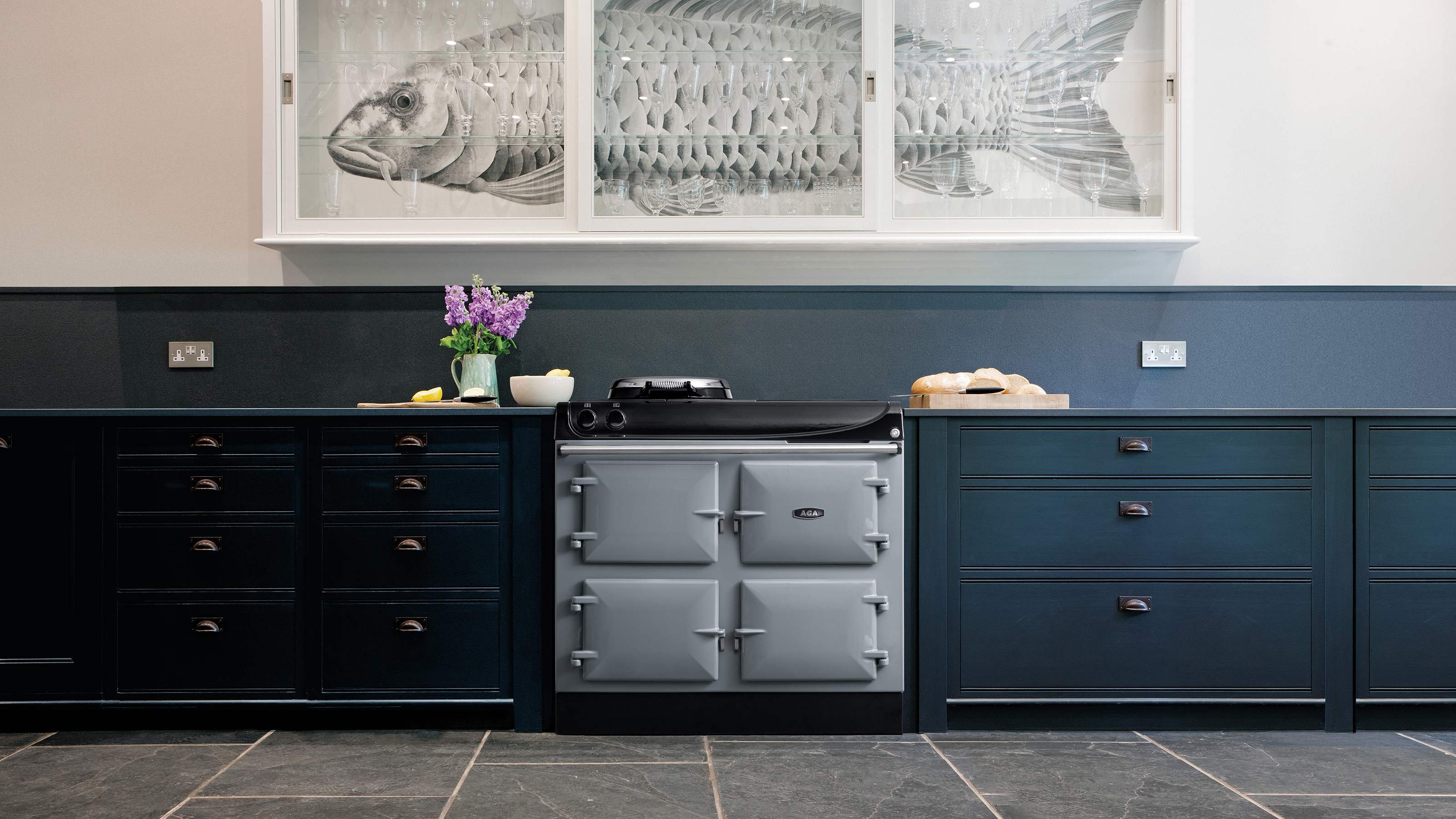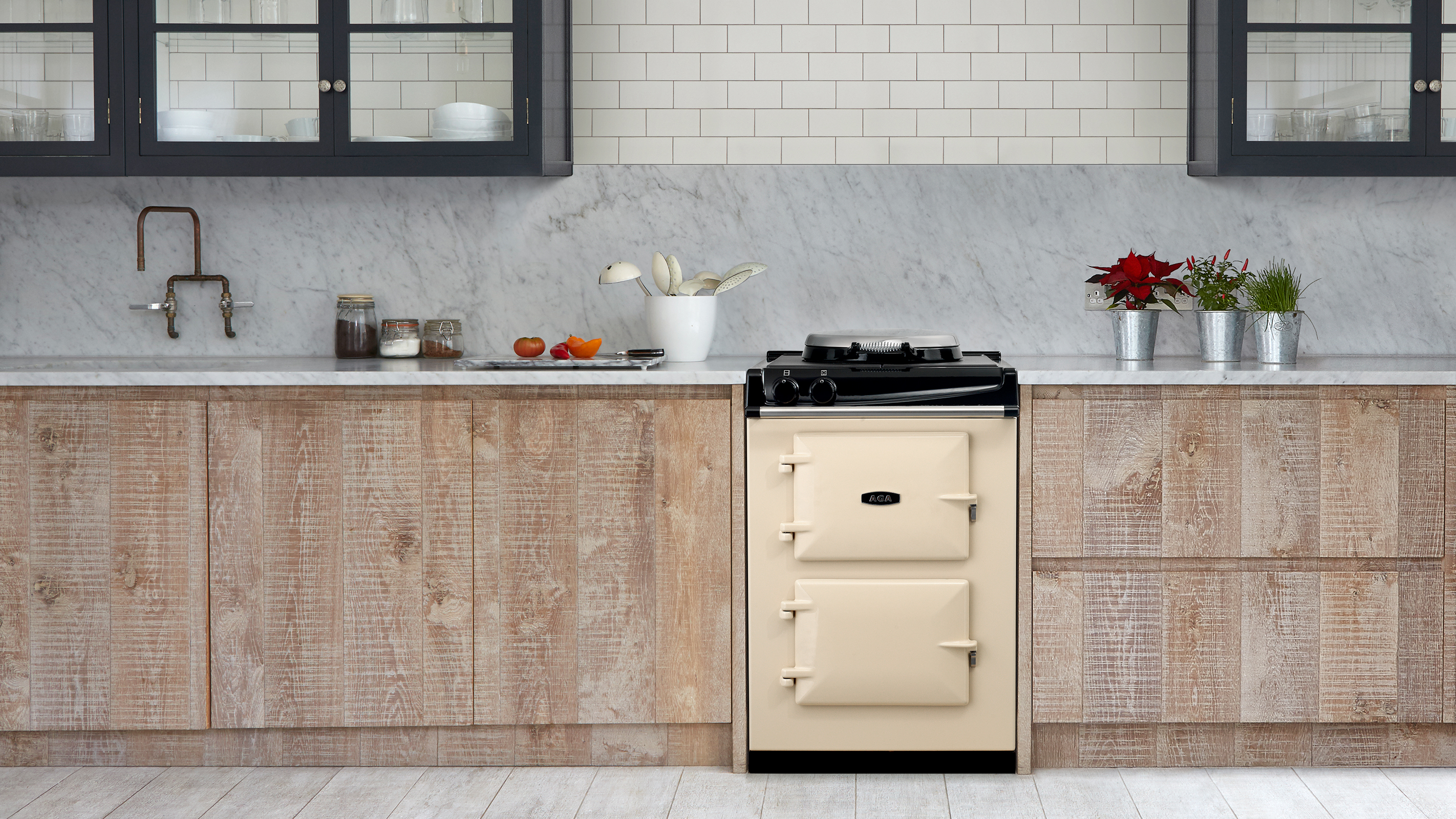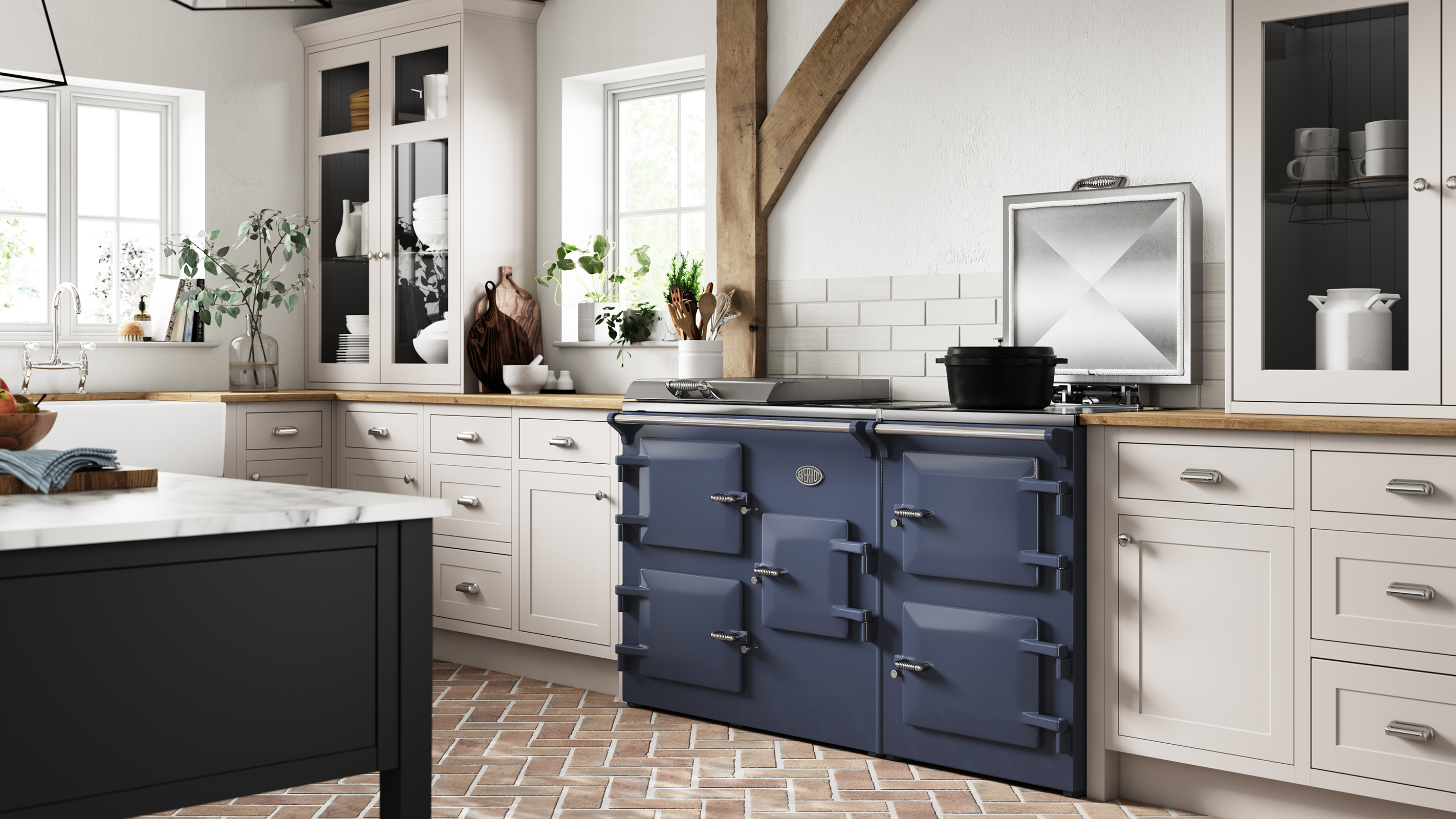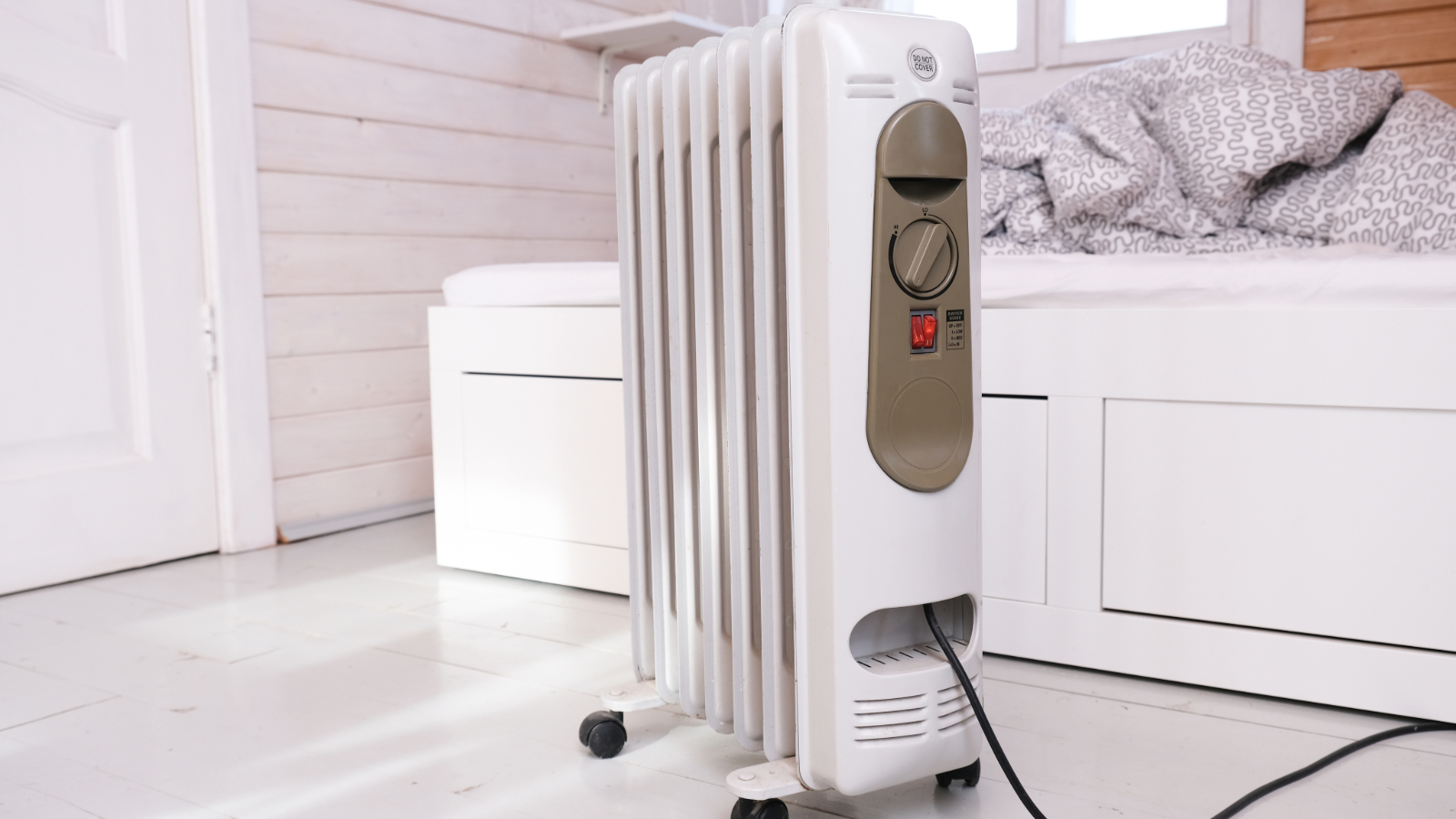What is an AGA and what are the alternative options?
Exactly what is an AGA? We take a look at how much they cost to run and whether this iconic kitchen feature is the right choice for you

Despite being around for decades, people still ask 'what is an AGA?' While we may all instantly recognise their timeless design, the way in which they cook food and work remains something of a mystery for many people at the kitchen design stage of their project.
For example, many people often confuse AGAs with Rayburn cookers, which can be used as a method of heating the home, while others might not be aware of how much things have changed when it comes to the design and operation options that are now available when it comes to AGAs.
So, whether you have inherited an AGA in your renovation project and are wondering whether to keep it, or are considering buying one for your new kitchen, we are here to explain the ins and outs of this type of cooker, including how much they cost to run — plus we take a look at the alternative options out there.
What is an AGA?
AGAs were first invented way back in 1922 by a Swedish physicist called Dr. Gustaf Dalén who was keen to find an alternative to the range cookers around at the time.
They came over to Britain in 1929 and in 1947 they began to be manufactured in Shropshire.
AGAs are made of cast iron and are a form of heat-storage cooker that use radiant heat from the cast iron ovens to cook food gently, preventing food from drying out.
AGAs are spacious cookers, offering various configurations of multi-level ovens (which will usually include one 'roasting oven' and one 'simmering oven') along with hot plates on top.
Bring your dream home to life with expert advice, how to guides and design inspiration. Sign up for our newsletter and get two free tickets to a Homebuilding & Renovating Show near you.
There is a huge range of options these days, from compact models with just two ovens and one hot plate – perfect for those after small kitchen ideas – to those with a multitude of ovens for slow cooking, grilling, warming and so on. Many of the new models now have state-of-the-art induction hobs alongside the traditional hotplates too.
Do AGAs have to be on all the time?
Although traditional AGA models were designed to stay on all the time, this is no longer the case. This is good news for anyone that may have been put off an AGA due to the need they created for a separate oven to use in the summer months when it is too warm to have an AGA running all the time.
That said, it is still possible to buy AGAs that do stay on all of the time — the R Series: 24/7 Radiant Heat models, for example. While these types of cooker do not offer heating, the fact that they remain warm to the touch all the time means they do gently heat the room they are in. This means that users often feel central heating can be left off for longer.
In the case of AGAs that are designed to be switched on and off as required, you need to be aware that the ovens can take up to 60 minutes to get up to temperature when they have been turned off — although most models are now programmable. This means you can set them to be ready for when you need them with a little forward planning. Traditional cast iron hotplates on these ovens take around 12-15 minutes to heat up — although modern models can be specified with induction hobs that instantly heat up and cool down.

What fuel do AGAs use?
AGAs can be fuelled by electricity, gas, oil or even solid fuel. Many models are now designed to be 'dual fuel' with electric induction hobs and ovens powered by gas or oil. Gas hobs are also an option.
How much do AGAs cost to buy?
This very much depends on the model you opt for. At the lower end of the price scale lies the compact AGA 60 range which costs from just over £7,000. That said, prices for some of the largest models, with optional extras, can easily rise to £20,000 or more.
It is possible to buy second hand reconditioned AGAs too and this can be a great way to bag a bargain — but do be sure to buy from a reputable source, check what kind of guarantee is being offered and don't forget to factor in installation costs if not included.
Are AGAs expensive to run?
It is almost impossible to give an exact figure when it comes to AGA running costs — there are just too many variables, such as fuel type, the model you choose and how much you use the cooker.
AGAs are certainly less expensive to run than they once were, thanks to faster heat up times, the fact that ovens and hot plates can now be used independently, adjustable temperatures and the way in which the newer models do not have to be on all the time.
On AGA's website, they aim to provide a guide to the kind of running costs you can expect, so, for example, the R3 Series used on baking and simmering mode 24 hours a day on an economy setting is predicted to cost the user £20.69 per week, based on the average cost for electricity being 28p/kWh.
In terms of power consumption, their AGA 60, used with both cast iron ovens on full temperature continuously and with the hotplate off uses 82 KWH per week.
Are Rayburns the same as AGAs?
Although similar, no they are not the same.
Rayburn cookers, now made by AGA, are also made of cast iron and feature various ovens with different functions and they can be fuelled by electricity, oil or solid fuel.
The way in which they differ, is that they offer three different options: cooker only; cooking and hot water; and cooking, hot water and central heating models.
Cooking and hot water models provide hot water to a home as well as functioning as cookers, while cooking, hot water and central heating models also heat radiators.
Historically Rayburns, like AGAs were kept on all the time but, as with AGAs, functionality has now been separated so you can cook without having to run the central heating.

What are the alternatives to an AGA?
AGAs might be beautiful and, these days, come in a massive range of colours, designs and with an array of cooking functions and optional extras, but for those after an alternative, what are the choices?
If it is the multiple ovens you like the idea of, choosing a range cooker will be the best alternative. Range cookers come in all kinds of designs, from traditional models to super sleek contemporary designs, plus they come in many different sizes and can be powered by a variety of fuel types.
In order to find the best range cookers for your needs, take into account your budget, the size and style of your kitchen as well as the way in which you cook.
You should note that AGA is not the only company offering heat storage cookers. Everhot, for example, is a hugely popular brand offering a big range of beautiful electric cast iron cookers that are designed to offer great energy efficiency when compared to many other range cookers around. This is thanks to the fact that the cookers are designed to harness renewable energy, with a trickle feed electric design that can be used very effectively with solar panels and renewables.
According to Everhot, whose cookers are designed to run 24/7, when left on for 24 hours a day, with both the ovens and cast iron plates on and using their factory set ECO program, power consumption of their EVH 60 model is 75 KWH per week.

Natasha was Homebuilding & Renovating’s Associate Content Editor and was a member of the Homebuilding team for over two decades. In her role on Homebuilding & Renovating she imparted her knowledge on a wide range of renovation topics, from window condensation to renovating bathrooms, to removing walls and adding an extension. She continues to write for Homebuilding on these topics, and more. An experienced journalist and renovation expert, she also writes for a number of other homes titles, including Homes & Gardens and Ideal Homes. Over the years Natasha has renovated and carried out a side extension to a Victorian terrace. She is currently living in the rural Edwardian cottage she renovated and extended on a largely DIY basis, living on site for the duration of the project.

